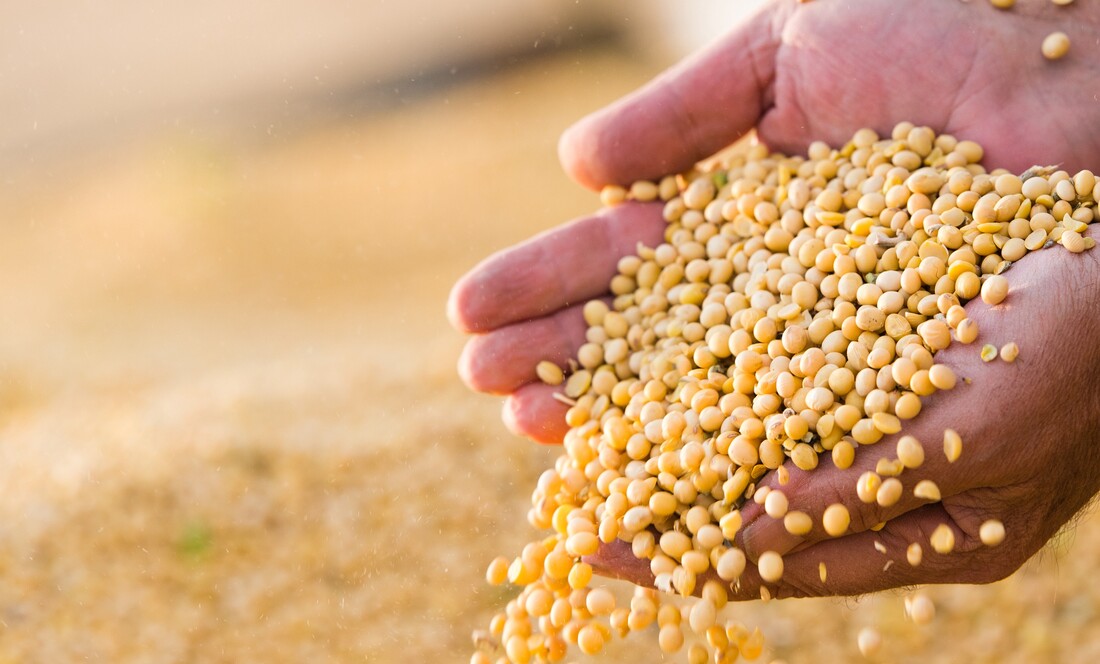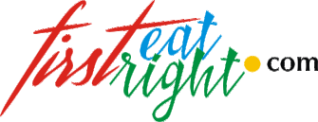|
Nutrient insufficiency is omnipresent. There are not many who have a healthy stock of all the required nutrients in the body and those suffering from deficiencies mostly rely on supplements to fulfil their needs. Physicians generally recommend patients to eat a well-balanced diet that’s replete with nutrients and even suggest a list of fruits, vegetables and other foods that are enriched with the nutrients missing in their body. But mankind has always been lazy to incorporate ideological ways depending mostly on shortcuts to fulfil most of their requirements. Even supplements came into existence only due to our inadept handling of our food habits.
Fruits and vegetables have always been our holy grail to health. We also depend on other foods such as dairy, fats, whole grains, nuts, seeds and legumes to fulfil all our nutrient needs. The list seems to be in total contrast of the junk food list that makes our mouth water even when we are simply reading it. So, how do legumes and pulses fare in our list of daily food recommendations? Make Some Room for Legumes in Your Diet Legumes in general, especially soybeans, are extremely rich in iron and ferritin content. They constitute a major portion of the diet for a large section of the human population and germination enhances the iron bioavailability of soybean. Iron is available as heme and non-heme iron in animal- and plant-based products respectively. While heme iron is easier to absorb non-heme iron is less readily absorbed by the body. Soybeans are a potent non-heme iron source that’s been increasingly consumed these days for its potent iron composition. Women in general suffer from anaemia problems and they mostly blame it on their menstruation cycle for this as they lose ample blood every month. Otherwise too the human population is not a big fan of iron adequacy as most people including infants, kids and the elderly suffer from iron deficiency. Suggesting such people to eat pomegranates, dates or beetroot is not something new but again have we ever followed any of the nutritional guidance given by others? Definitely not. Meta-analysis on the Effect of Fortified Soybeans on Infants Malnutrition and stunting are common problems in infants worldwide and China is no exception. Its been shown that infant malnutrition-related to stunting and anaemia are two of the commonest problems reported in infants and young children (IYC) in poor rural regions of China. Such unmatched nutrition levels elevate the risk of infectious diseases, cognitive disorder and chronic diseases as they grow. Statistics by the National Nutrition Survey show that anaemia rates in 0- to 6-, 6- to 12-, and 12- to 24-month-old IYC was 23.4%, 28.5% and 15.7% respectively with rates exceeding 40% in 6- to 24-month-old IYC in some regions of the country. Its saddening to see that some newborn babies suffer from such complications soon after birth. At the same time, we need to come up with effective solutions to end this problem. Complementary food feeding is the best way to tackle stunting and anaemia in YIC. WHO reviewed the effects of micronutrient powder (MNP) on IYC revealing that MNP did improve haemoglobin concentration but did not do anything with regard to stunting. Ying Yang Bao (YYB) is a soybean powder product enriched with vitamins and minerals often used as an MNP in China. It is commonly used as a complementary food containing protein and fat largely provided to infants in poor, rural regions of China. We have a number of studies probing into the effect of YYB on reducing infant malnutrition-related stunting and anaemia but results are contradictory. So, a group of researchers were determined to find the exact effect of the supplement on rural infants. They searched databases such as Central and Medline using several text terms such as Ying Yang Bao, anaemia, complementary food supplement, growth, development and so on to identify potential research materials. Different eligibility criteria were imposed, randomized and quasi randomized trials were included and all the participants were healthy boy and girl IYC anywhere between 6 and 24 months without any health problem at the time of intervention. The researchers defined anaemia as haemoglobin values lower than 110g/L and stunting as having a z score <-2.0 for height for age. Underweight is defined as having a z score <-2.0 for weight for height. Results The database came up with 17340 publications from which only 22 articles were selected after imposing all the eligibility criteria. Again, 5 studies were excluded due to incomplete information available and the remaining 17 studies were included in the meta-analysis. All the studies included YYB durations between 3 and 18 months, sample size was between 76 and 2183, 8 of them were parallel control trials and 16 were before-after control trials. Haemoglobin Concentration YYB vs No-intervention Studies There were 6 studies having 9 subgroups involved in this specific study containing a total of 4929 participants. YYB supplementation resulted in increased haemoglobin concentration when compared to the control group and the changes were significant across subgroups. Before-after Studies This included 10 studies with 15 subgroups with a total sample size of 15897 (8269 participants before and 7628 participants after study). Significant increase in haemoglobin concentration over baseline was visible in the studies after YYB supplementation. All the studies had a follow-up period either above or below 12 months and across these periods too the results remained significant. Anaemia Rate YYB vs No-intervention Studies This included 7 studies with 12 subgroups with a total sample size of 11027 and YYB supplementation decreased anaemia rates across the intervention group in all the study participants in comparison to the control group. Before-after Studies 13 studies with 20 subgroups were included here with a sample size of 26496. Subgroup analysis showed that anaemia rate was lower after YYB intervention compared to baseline and the results remained the same even after excluding two studies after they displayed low quality. Stunting YYB vs No-intervention Studies Four trials were included and they showed 47% reduction in stunting after the kids were fed with YYB. Before-after Studies 12 subgroups were included here with 7536 participants before and 7895 participants after the study. While stunting effects were significantly decreased after providing YYB supplementation there was no effect of the supplement found in the subgroup under 12 months. Underweight YYB vs No-intervention Studies Two trials with a sample size of 885 were included here where underweight prevalence decreased by as much as 46% compared to the no intervention group. Before-after Studies This analysis included 10 trials with a sample size of 7599 participants (3996 of them before study). Feeding the participants with YYB decreased underweight rates as much as by 51% and the results remained the same even after excluding 2 studies due to some reasons. Wasting YYB vs No-intervention Studies Two trials with a sample size of 885 were included here but the supplement had no effect on wasting prevalence rates. Before-after Studies 7 trials with a sample size of 5376 (2835 before and 2523 after) were included here and YYB supplementation showed significant decrease in wasting prevalence compared to baseline. Results showed no differences even after excluding a study. YYB is an effective means to reduce anaemia, stunting and underweight in IYC. A study conducted in Guatemala in kids 2 years and above showed that consuming a supplement with high protein and energy content helped the kids score more in reading, math and other cognitive skills compared to those who did not consume such nutrients. Pollitt et al. conducted a follow-up study on kids aged under 18 months and found that after their 8th birthday these children showed better memory capability that those in the control group. This clearly shows that giving food supplements during appropriate periods of the kid’s growth and development has a long-term impact on their intelligence. References Supplementing Fortified Soybean Powder Reduced Anaemia in Infants & Young Children Aged 6-24 Months: https://www.sciencedirect.com/science/article/pii/S0271531718307553 Comments are closed.
|
AVOID FRAUD. EAT SMART+91 7846 800 800
|
- Home
- Written Testimonials
- Consult
- Clinics
- Blogs
-
Diet & Nutrition
- Diabetes Reversal
- IVF IUI not needed for PCOS PCOD Infertility
-
Medical Nutrition
>
-
Disease & Conditions
>
- Infertility | PCOS
- Diabetes Mellitus
- Cholesterol
- Hypothyroid
- Kidney Problems
- Hypertension
- Cardiovascular Diseases
- Liver Diseases
- Gastro intestinal disorder
- Cancer
- Metabolic Disorders
- Orthopedic Disorders
- Eating Disorders
- Dietary Recall
- Weight Record Filled By Clients
- Online Payment Transaction Details
- Online Clients Weight Check Form
- Our Program Package Service Charges
- Weight Record 2017 Clients
- Measurements sent by Clients
- Terms & Conditions Of Payment
- Thanks. Your Form is Submitted
- Video Testimonials
- Lifestyle & Wellness
- Lifestyle & Wellness Blog
- Allergy & Intolerance
- Weight Loss / Gain
- Weight Loss / Slimming Blog
-
Disease & Conditions
>
- Life Cycle Nutrition >
- Sports Nutrition >
- Integrity in Nutrition
- Knowledge Centre
© COPYRIGHT 2022. ALL RIGHTS RESERVED. FRST HEALTHCARE PVT LTD.
Dr. Nafeesa Imteyaz of First Eat Right clinic, is the Best Dietitian Nutritionist in Bangalore. Best Dietitian Nutritionist in Pune. Best Dietitian Nutritionist in Hyderabad. Best Dietitian Nutritionist in Chennai. Best Dietitian Nutritionist in Mumbai. Best Dietitian Nutritionist in Delhi. Best Dietitian Nutritionist in Kolkata.



